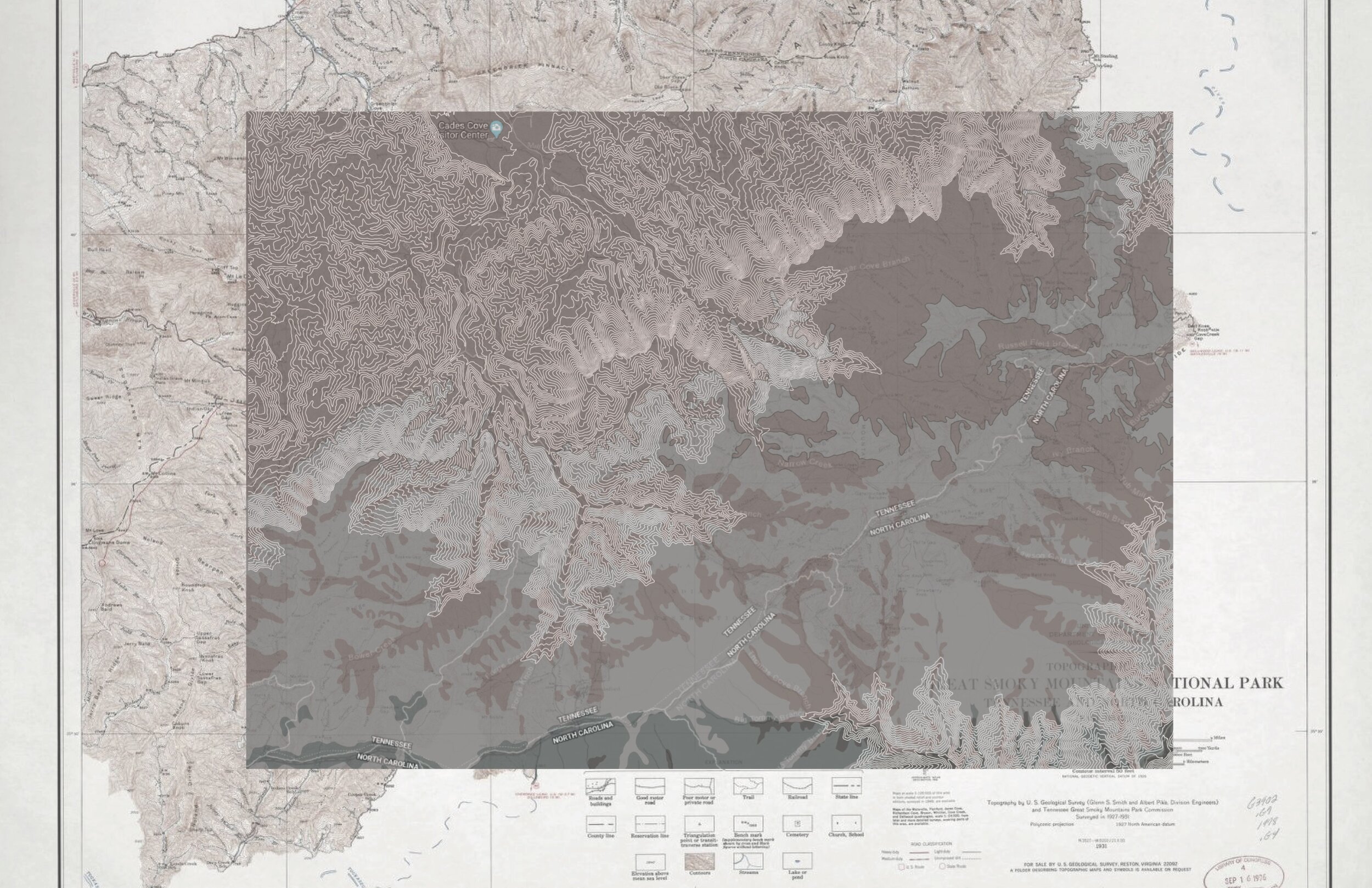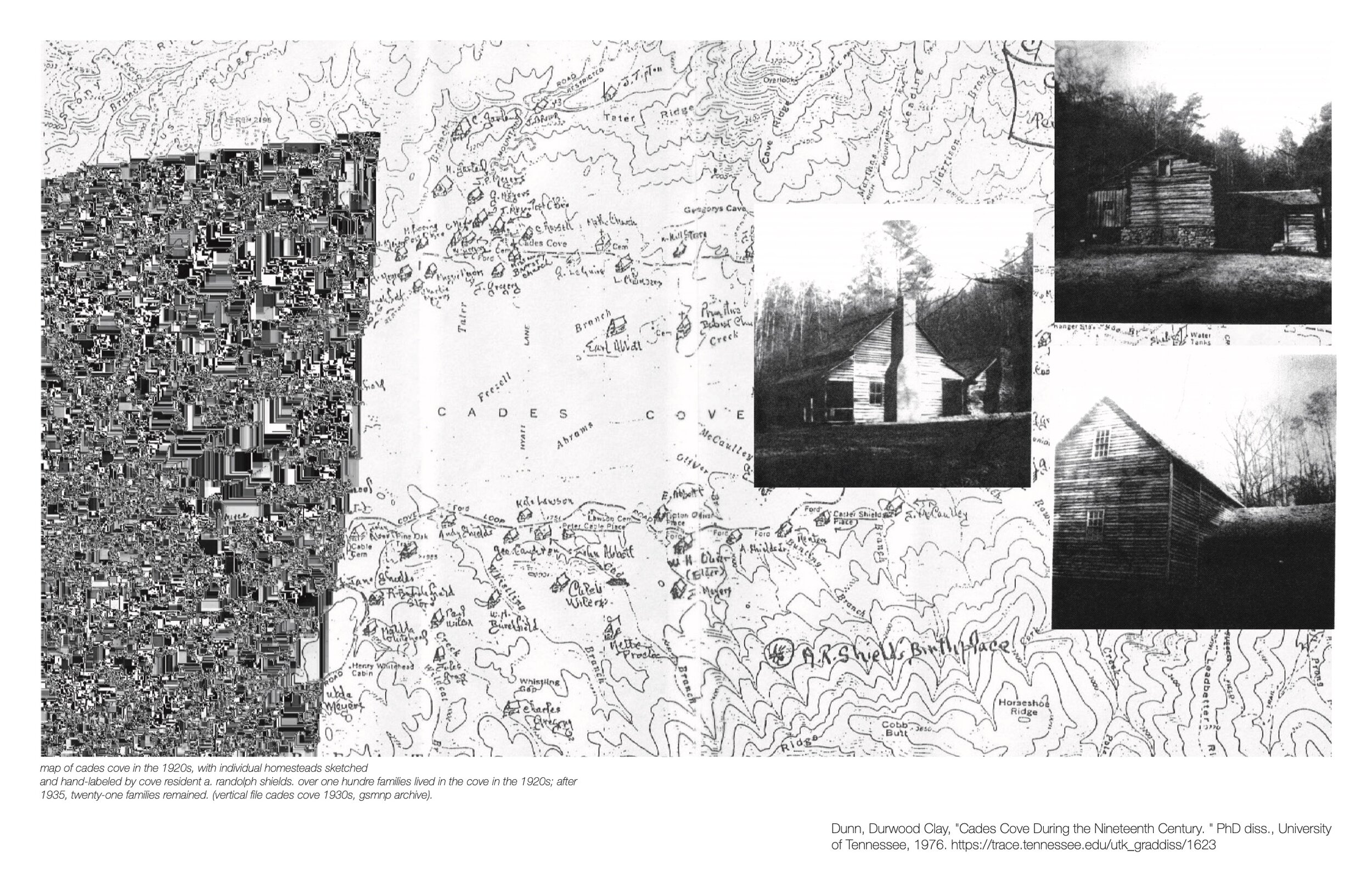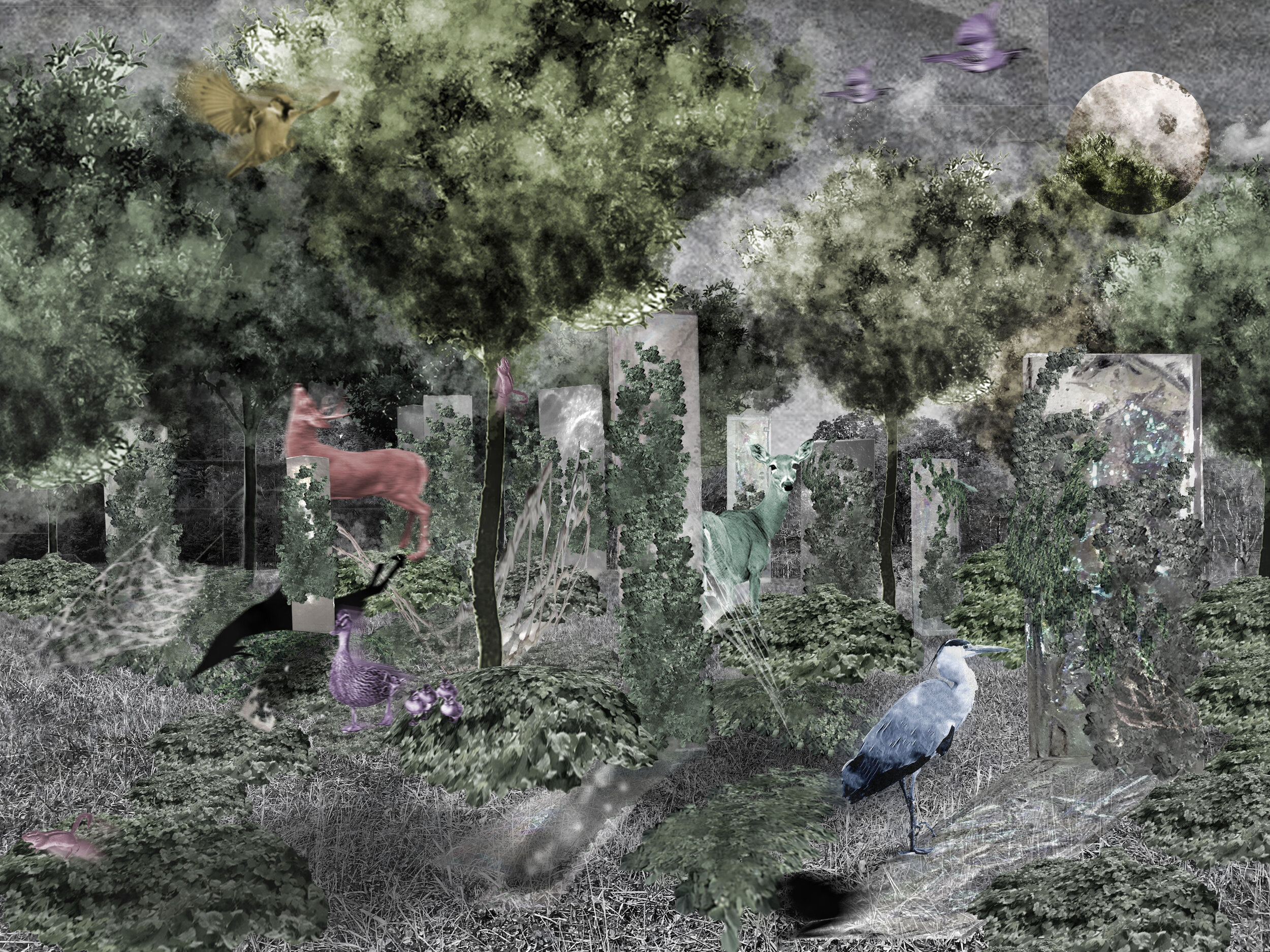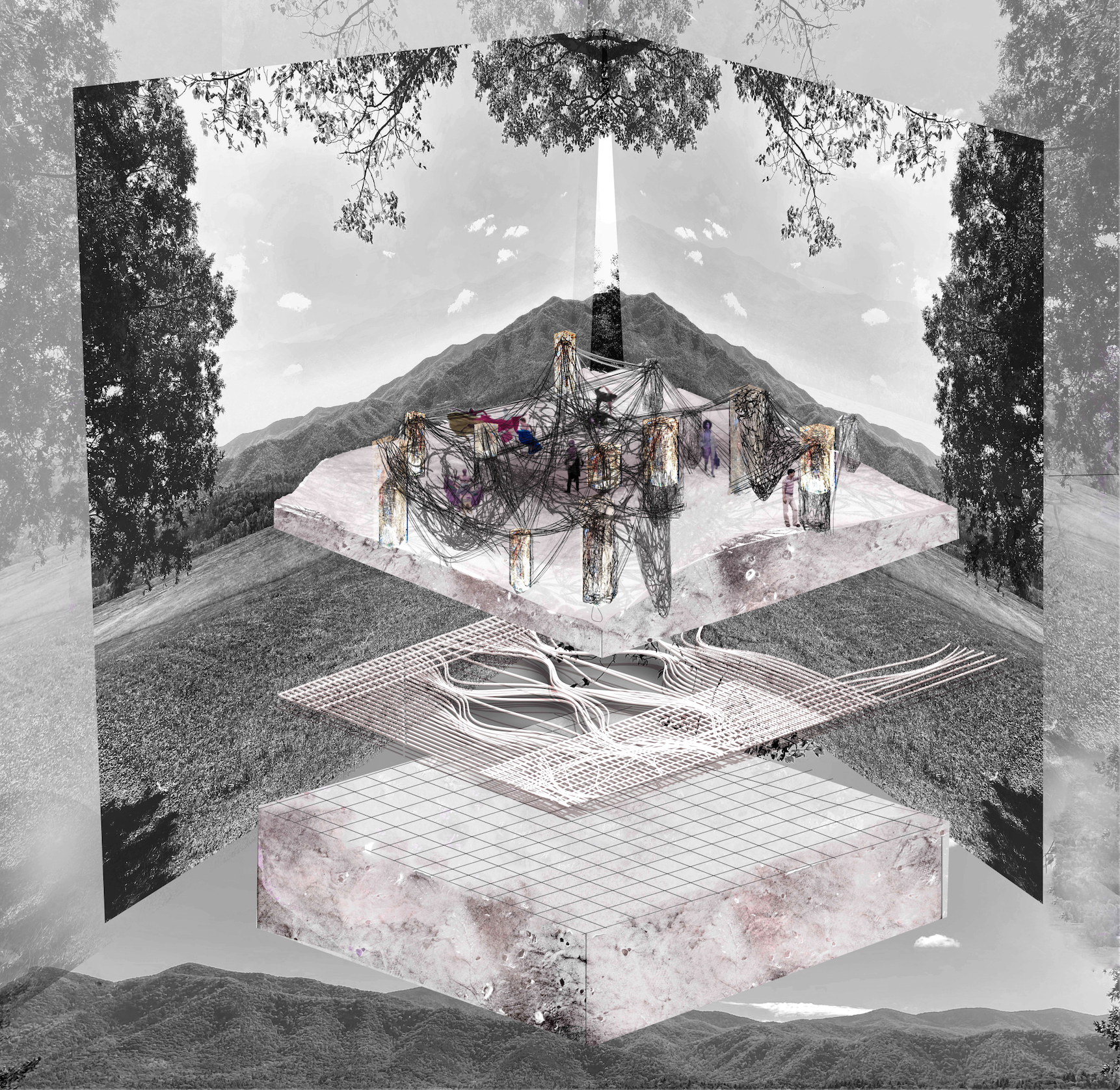unearthing thick injustice
studio Walling explores the notion of the commons in public spaces such as national parks and how architecture addresses it
how do you capture a moment in time?
Drawing on the stillness that we are experiencing today. Resin captures a moment caught in time and preserves those few seconds allowing us to visualize and experience all the moments we miss out on everyday. We can begin to appreciate the age of slowness that we have entered. The mark making process depended heavily on wind, timing, and light. Through the use of a blowdryer, the paint created beautiful marks into the landscape, light influenced how each mark could be visualized and the timing of the painting process was organic and fluid. Imagining a landscape of sensory experiences, through texture and memory, this artifact illustrates the interconnectedness and individual moments we have in our lives that tend to overlap hence the layering effect.
age of slowness



tragedy of the commons
to fully interpret the commons, we must first unpack the tragedy of the commons. the intent of the commons is to have shared spaces, resources and uses "equally". however the shared intent of short-term personal gain destroys the idealized purpose of the commons resulting in destruction of life (this must include non-human life, to challenge the anthropocentric values we are naturally inclined to prioritize). we need to begin understanding the trauma that exists underneath the surface through buried stories and manifests itself into the intended programs of equality resulting in anti-equitable practices. this projects delves deeper into the embedded narratives that which the landscape of cades cove is built on. the untold stories draw from memory and trauma, which then continue to be perpetuated generationally.
the value of the landscape and its resources are left to the needs and wants of human life, when we should be thinking of value on a microscopic and long-term scale. through experiencing national parks through our senses . the programs of the commons should incorporate the senses to heighten the experiences of people from mall walks of life. we have a right to the air, freshness, natural surroundings but there is a lack of purpose and respect for what exists around us in our day to day lives. historical context allows for people to look to the future with others' lived experiences. to reconsider the historical context of the landscape there can be space that includes those stories that are left to be untold and forgotten, storytelling as a form of the commons.

photo taken by Andrew Soundarajan
Founded in 1934, created and maintained by New Deal era policies and programs, such as the Civilian Conservation Corps, the Great Smoky Mountains National Park is the most visited national park in the United States. Known for its beautiful landscape, the National Park Services overlook the historical context of the Great Smokies.

site map of Cades Cove, vegetation cover overlayed onto 1920s archival map.

The intricately sculpted landscape of Cades Cove sits on rich fertile soil and jonesboro lime- stone which is made up of micro and macro fossils. Cades Cove also sits on rich history. History of ecologies, history of movement and history of people. Thinking through the oral histories of the people that moved in and out of this land we can begin to understand that the landscape is informed by people’s narratives. Storytelling goes against the Eurocentric/ westernized methods of data collection/evidence. Storytelling goes against erasure. Story- telling gives us pieces of the history we were never told. Cades Cove is situated in the great smoky mountains (Appalachian mountain range) on the Tennessee side. This map show vegetative cover and geologic formations as the cove is at a geologic fault sculpted by jonesboro limestone. This beautiful site also sits on rich, fertile soil that runs deep. The movement of people in and out of the cove is diverse from Appalachia to the Cherokee to Liberia.

1920s map of white Appalachian settler homesteads. prime example of parkitecture
Cades Cove
intricately sculpted landscape, sculpted by geologic formations and the stories of its inhabitants.
348 black families. forgotten. untold.
African-Americans on porch in the Great Smoky Mountains Circa 1890-1903, Source: W.O. Garner Collection
“peeling back the layers of the landscape”
thick injustice (n.) unjust power relations that are deep and densely concentrated, as well as opaque and relatively intractable.
By peeling back the layers of a landscape to reveal the thick injustice that lies beneath the surface we can begin to understand that the environment that we shaped has in turn shaped us.
Recorded part of a 10/08 zoom conversation with Antoine Fletcher regarding the research that he has been part of.
“How do you take different sides of history and show them in a positive way?””
Compiled research from conversations with Antoine Fletcher and documents of known Black inhabitants of Cades Cove and surrounding areas. The documents included names when possible and back stories of some of those people. The research worked a lot like a puzzle for Adam McNeil and others who worked with him on this topic.
Pieces of a Puzzle
After corresponding with Appalachian Highlands Education Coordinator, Antoine Fletcher of NPS, his research with Adam McNeil focused on gathering the untold stories of the Black inhabitants of the Smokies. Growing up in the foothills of the smokies, Antoine spoke of the relationship that Black folk have to their land, and how complicated it has been made to be. For him, the smokies was his home and he felt that the landscape welcomed him, but the people did not. I was lucky enough to gather the names of the known black families that resided in the smokies George Washington Turner being one of the first in the park. The movement of black folk was extremely diverse, there were Liberian inhabitants believed to live in the smokies as well. From all these stories and narratives we asked ourselves: How do we commemorate the lives of the forgotten black families? And if so, how can we stray away from the Eurocentric definition of monuments?
Commemorating a Moment
There are three main elements to this moment that are rooted in anti-ablism, the first is tactility - the casted columns are engraved and embossed in raised languages of the names of the black inhabitants, the engraved names are revealed by rubbing soil into the grooves of the letters and the raised languages include braille and embossed letters. The second element are projections of sound and visuals of the untold narratives of the inhabitants of the land. The final element, is weathering, as time goes on, the sweet gum seedlings root themselves into the landscape and become inhabitants of the land, the coins begin to spread across the landscape and weigh down into the earth to become a part of the land, never rejected again and finally the columns might erode away or become home to kudzu. In turn, the landscape celebrates and commemorates those stories.
The moment is proposed to be placed near the visitor center in Cades Cove to be explicit in its presence, and as time goes on, we can see what happens with the impact of the network and what happens when the columns aggregate themselves all over the park.
Taking and Giving
Columns that are engraves and embossed in the names of the forgotten lives, would be grounded into the landscape. The removed soil from installation would house the sweet gum seedlings that are held by the woven macrame drops. This symbiotic exchange is a way of receiving and giving with the landscape.




Woven Past
stories intertwine with each other resulting in an interconnectedness that we cannot ignore. so when we look at such a complex history of a place, we need to think about the intersectionality of the landscape and its context and in turn we need to also think about the intersectional identities.
Containing
when we contain or suppress narratives and entire histories we do not expect it to come back. we think we can control through suppression and oppression, but just like nature always breaks through, we find that histories eventually surface. and when it does surface it is not orderly, it is more chaotic than the means in which it had been oppressed.
Storytelling
a network of connecting fabric grounded by soil and coins and suspended by casted columns erecting from the ground in celebration of the unearthing of history. just as intricate as the underground railroad is, this complex form is shaped by history, the stolen, erased, retold and unearthed history.
Dynamic Relationship
Scaffolding
. To perceive the landscape beyond the physical and through the lens of the metaphysical, access for all life becomes more attainable. The commons perceived as physicality is obsolete when we acknowledge that ‘brain’ is common. The way in how our perpetual perception of the world around is governed by the scaffolding of our minds, thoughts and cognitions. The trajectory of this project is aimed towards the acknowledgement of underrepresented groups of people. The metaphysics of individuality return to the multitude of bodies, as time goes on. Embodying the narratives of individuals result in an exchange of cognitions.

Time.
A sensory experience that adjusts to its viewer throughout time. Through the impact of the tactile, auditory and visual experiences that the space provides for humans. This part of the project caters to the connections of humans’ neural functional systems of accessing the power of the brain through thinking, memory and perception. How can the landscape interpret the historical context? Time. As we move from a humanistic approach rooted in the metaphysics of individuality, the landscape changes and grows with new canopies and invasive kudzu. Can we articulate this event as the transition from humanist to the environment shaping itself for other species to experience in a way that we cannot?


unearthed
The impact could be instrumental to unearthing the truth of the landscape. If we start to acknowledge history as it is, we can begin to move forward in how we perceive the world around us,













